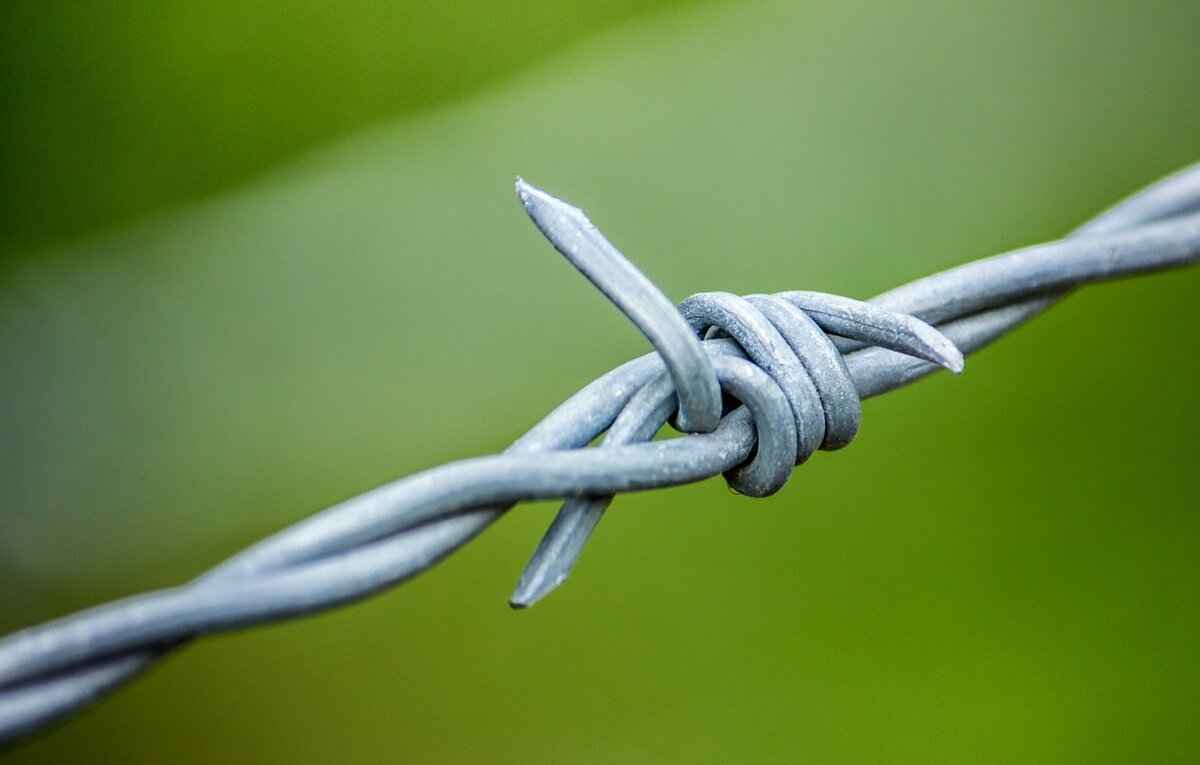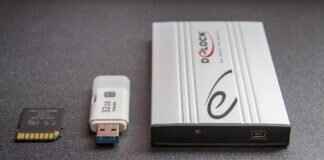This article explores practical steps and insights for individuals looking to streamline and reorganize their digital lives after a divorce, ensuring a fresh start in the digital realm.
Assessing Your Digital Footprint
Understanding your digital presence is crucial after a divorce. Begin by listing all your online accounts, including social media platforms, email accounts, and any subscriptions. Review each account carefully to determine its relevance in your new life. Ask yourself:
- Do I still want to be connected to this person or group?
- Is this account causing me emotional distress?
- What personal information does this account hold?
Make a decision to either keep, delete, or deactivate accounts that no longer serve you. This process will not only reduce clutter but also help you regain control over your digital identity.
Updating Passwords and Security Settings
Post-divorce, it’s vital to enhance your online security. Start by changing passwords for all significant accounts, especially those that may have been shared with your ex-partner. Use a combination of upper and lower case letters, numbers, and symbols to create strong passwords. Consider using a password manager to keep track of them. Additionally, enable two-factor authentication wherever possible to add an extra layer of security. This will help protect your personal information from unauthorized access and give you peace of mind.
Cleaning Up Social Media Accounts
Social media can be a double-edged sword after a divorce. It’s important to curate your online presence to create a healthier digital environment. Start by reviewing your friend lists and removing connections that may trigger negative emotions. Adjust your privacy settings to limit who can see your posts and personal information. Consider taking a break from social media to focus on your well-being. Engaging with supportive friends and communities can help you navigate this challenging transition.
Organizing Digital Files and Photos
Reorganizing your digital files can provide clarity. Begin by categorizing important documents, such as financial records and legal paperwork, into clearly labeled folders. For photos, create albums that reflect your new life, perhaps separating them into categories like “Travel,” “Friends,” and “Family.” Delete or archive any images that remind you of your past relationship. This not only declutters your digital space but also allows you to celebrate your new beginnings.
Managing Email Subscriptions and Contacts
Your email can easily become cluttered after a divorce. Start by unsubscribing from newsletters and promotional emails that no longer interest you. Use filters to organize important messages and prioritize contacts that matter most in your new chapter. Consider creating a new email account for personal use, which can help you compartmentalize your digital life and reduce distractions.
Evaluating Digital Subscriptions and Services
Reviewing your digital subscriptions is essential for financial clarity. Take stock of your streaming services, apps, and any paid memberships. Ask yourself if these services align with your current lifestyle and interests. Cancel subscriptions that you no longer use or need. This not only saves money but also simplifies your digital life, allowing you to focus on what truly matters.
Setting Up New Accounts for a Fresh Start
Creating new accounts can symbolize a fresh start. Consider setting up a new email address and social media profiles that reflect your new identity. Use this opportunity to present yourself authentically and engage with communities that resonate with your current interests and values. This fresh digital presence can be empowering as you navigate life post-divorce.
Implementing Digital Decluttering Strategies
Digital clutter can be overwhelming. Implement strategies like the “one-in, one-out” rule, where you delete an old app or file each time you download something new. Schedule regular digital decluttering sessions to keep your devices organized. Use tools and apps designed for file management to streamline the process. By maintaining a clean digital space, you can reduce stress and increase productivity.
Utilizing Technology for Emotional Healing
Technology can aid in emotional recovery. Explore apps and online resources that support mental well-being, such as meditation and mindfulness applications. Join online therapy sessions or support groups that can provide valuable insights and community during this challenging time. These tools can help you navigate the emotional challenges that often accompany divorce, promoting healing and growth.
Connecting with Supportive Online Communities
Finding support online can be beneficial. Seek out forums and social media groups focused on divorce recovery and personal growth. Engaging with others who share similar experiences can provide comfort and practical advice. These communities can offer encouragement and a sense of belonging, helping you feel less isolated as you navigate your new life.
Creating Boundaries in Your Digital Life
Establishing boundaries is key to a healthy tech life post-divorce. Set limits on your screen time and interactions, particularly with social media. Schedule specific times to check your accounts rather than allowing them to consume your day. This will help you maintain a balanced digital lifestyle, reducing anxiety and fostering a more positive outlook.
Planning for Future Tech Needs
Looking ahead is essential. Identify your future tech needs, whether it’s upgrading devices or investing in software that supports your new lifestyle. Consider how technology can enhance your personal and professional goals. By being proactive in your tech decisions, you can ensure that you are equipped for what lies ahead, making your digital life a source of empowerment rather than stress.

Assessing Your Digital Footprint
In today’s interconnected world, understanding your digital footprint is more important than ever, especially after experiencing a divorce. Your digital presence encompasses all the information available about you online, including social media profiles, email accounts, and various subscriptions. After a significant life change like a divorce, it is essential to evaluate what aspects of your digital life you want to keep and what you need to let go.
Start by conducting a thorough review of your online accounts. This includes checking all social media platforms, email accounts, and any online services you have subscribed to. Make a list of these accounts and categorize them based on their relevance to your current life situation. For instance, do you still need that joint account with your ex-partner? If not, consider closing it to avoid any potential complications.
- Social Media Accounts: Evaluate your profiles on platforms like Facebook, Instagram, and Twitter. Are there posts or photos that no longer represent who you are? Do you need to unfollow certain individuals or groups that remind you of your past? Curating your online presence can significantly impact your emotional well-being.
- Email Accounts: Check your email for subscriptions that may no longer serve you. Unsubscribe from newsletters or promotional emails that clutter your inbox. This step can help you focus on more pertinent communications.
- Online Subscriptions: Review your streaming services, app subscriptions, and memberships. Are they necessary? Cancel any that do not align with your current interests or budget.
Next, consider the implications of your digital footprint on your privacy. After a divorce, it is wise to update your privacy settings on social media to restrict access to your personal information. Take the time to review who can see your posts, photos, and friend lists. This step is crucial in protecting your personal space and ensuring that you feel secure in your online interactions.
Finally, think about the emotional impact of your digital footprint. Holding on to certain accounts or connections may hinder your healing process. It can be beneficial to disconnect from reminders of your past and focus on building a new digital identity that reflects your current self. By actively managing your digital presence, you can create a more positive and empowering online experience.
In summary, assessing your digital footprint post-divorce is a vital step towards reclaiming your independence and emotional well-being. By evaluating your online accounts, updating privacy settings, and removing unnecessary connections, you can foster a healthier digital environment that supports your new chapter in life.

Updating Passwords and Security Settings
After a divorce, it’s crucial to prioritize your online security. This transition period can leave many feeling vulnerable, especially regarding personal information and digital privacy. One of the first steps you should take is to update your passwords and review your security settings across all your online accounts.
- Change Your Passwords: Start by changing passwords for all your accounts, including email, social media, and banking. Use strong, unique passwords that combine letters, numbers, and symbols. Avoid using easily guessable information such as birthdays or pet names.
- Enable Two-Factor Authentication (2FA): Whenever possible, activate 2FA for an added layer of security. This requires not only your password but also a second form of verification, such as a code sent to your phone.
- Review Security Questions: Many accounts use security questions for password recovery. Ensure these questions are not easily answerable by someone who knows you. Consider changing them to something only you would know.
- Check Privacy Settings: Go through the privacy settings of your social media accounts. Limit who can see your posts and personal information. This can prevent unwanted access and protect your privacy.
- Monitor Account Activity: Regularly check your account activity for any unauthorized access. If you notice anything suspicious, change your password immediately and report the activity to the service provider.
Additionally, consider using a password manager. These tools can help you generate and store complex passwords securely, reducing the risk of forgetting them while enhancing your overall security.
Why is it Important? The importance of updating your passwords and security settings cannot be overstated. After a divorce, your personal information could be more vulnerable to unauthorized access. By taking these proactive steps, you not only protect your personal data but also gain peace of mind as you navigate this new chapter in your life.
In conclusion, enhancing your online security post-divorce is a vital step in reclaiming your digital life. By changing passwords, enabling two-factor authentication, and regularly monitoring your accounts, you can significantly lower the risk of identity theft or unauthorized access to your personal information. Take these steps seriously, and ensure that your online presence reflects the new, secure you.

Cleaning Up Social Media Accounts
Social media can be a double-edged sword after a divorce. While it offers a platform for connection and support, it can also expose you to unwanted negativity and reminders of your past relationship. Thus, curating your online presence is essential for fostering a healthier digital environment.
- Evaluate Your Friend List: Start by reviewing your friend or follower lists across all platforms. Consider removing or unfollowing individuals who may trigger negative emotions or remind you of your ex-partner. This process can help create a more positive online space.
- Adjust Privacy Settings: Take the time to adjust your privacy settings on each platform. Limit who can view your posts, profile, and personal information. This step is crucial for protecting your privacy and maintaining boundaries.
- Curate Your Content: Think about the type of content you want to share moving forward. Focus on posting positive updates that reflect your new life and interests. You can also share inspirational quotes or engage in topics you are passionate about, steering clear of any negativity.
- Consider Temporary Deactivation: If social media feels overwhelming, consider temporarily deactivating your accounts. This break can provide you with the space needed to heal and reflect without the constant distractions of online interactions.
- Be Mindful of Engagement: Pay attention to how you interact with others online. Avoid engaging in arguments or negative discussions that might exacerbate your emotional state. Instead, seek out supportive communities that uplift and encourage you.
In addition to these steps, it’s important to recognize the emotional impact that social media can have. Unfollowing your ex or mutual friends may feel like a drastic step, but it can be necessary for your mental health. Surround yourself with positive influences and engage with content that inspires you.
Furthermore, consider using social media as a tool for personal growth. Follow accounts that promote self-improvement, mental health, or hobbies that interest you. This shift in focus can transform your online experience from a source of pain to one of empowerment.
Lastly, remember that it’s perfectly acceptable to take your time in this process. Healing is not linear, and curating your social media presence is just one aspect of your journey post-divorce. By taking these steps, you can create a digital environment that supports your emotional well-being and encourages a fresh start in your life.

Organizing Digital Files and Photos
In today’s digital age, managing your digital files and photos is essential, especially after a significant life change like a divorce. Reorganizing your digital space not only helps in creating clarity but also allows you to reflect your new beginning. Below are some effective strategies to help you categorize, delete, or archive your important documents and photos.
After a divorce, your digital files can become a jumbled mess of memories, important documents, and unnecessary clutter. Taking the time to organize these files can lead to mental clarity and a sense of control over your new life. A well-organized digital space can also help you quickly locate important documents, reducing stress and saving time.
- Assess Your Current Files: Begin by reviewing all your files and photos. Identify what is essential, what can be deleted, and what needs to be archived.
- Create Folders: Set up a clear folder structure. For instance, you might have folders for Personal Documents, Financial Records, and Photos.
- Use Descriptive Names: When naming files and folders, use descriptive titles that make it easy to identify their contents at a glance.
One of the most liberating aspects of digital organization is the ability to delete files that no longer serve a purpose. Consider the following:
- Old Documents: Eliminate outdated contracts, bills, and other documents that are no longer relevant.
- Duplicate Photos: Use photo management software to identify and remove duplicate images, freeing up space.
- Unwanted Apps: Uninstall applications on your devices that you no longer use. This not only declutters your digital space but also can improve device performance.
For files that you want to keep but don’t need immediate access to, consider archiving:
- Cloud Storage: Utilize cloud services such as Google Drive or Dropbox to store important documents securely. This ensures they are backed up and accessible from anywhere.
- External Hard Drives: For large amounts of data, an external hard drive can be an effective solution. Organize files into folders on the drive to maintain order.
- Physical Copies: For crucial documents, consider keeping physical copies in a safe place. This is particularly important for legal documents and identification.
Once you’ve reorganized your digital files, it’s crucial to maintain the order you’ve established. Schedule regular check-ins, perhaps every few months, to review and update your files. This practice can help prevent clutter from accumulating again.
In conclusion, reorganizing your digital files and photos after a divorce is a vital step towards achieving clarity in your new life. By categorizing, deleting, and archiving your important documents, you can create a digital environment that reflects your current needs and aspirations. Implement these strategies to enjoy a more organized and stress-free digital life.

Managing Email Subscriptions and Contacts
After a divorce, many individuals find their email accounts filled with an overwhelming amount of subscriptions and contacts that no longer serve their current lifestyle. This digital clutter can be distracting and create unnecessary stress during a time when focusing on personal growth and healing is essential.
To effectively streamline your email subscriptions and contacts, consider the following steps:
- Assess Your Current Subscriptions: Begin by reviewing your email inbox for newsletters, promotional emails, and updates. Identify which subscriptions bring you joy or valuable information and which ones are simply taking up space. If you find newsletters that no longer resonate with your interests or needs, it’s time to unsubscribe.
- Utilize Unsubscribe Tools: There are various tools available that can help you efficiently manage your subscriptions. Services like Unroll.me or Cleanfox allow you to see all your subscriptions in one place, making it easier to unsubscribe from unwanted emails with a single click.
- Organize Your Contacts: After a divorce, it may be necessary to reevaluate your contact list. Remove any contacts that are no longer relevant to your life. This may include ex-in-laws, mutual friends, or acquaintances that remind you of your past. A clean contact list can help you focus on the relationships that matter most to you now.
- Create Folders and Labels: To keep your email organized, consider creating folders or labels for different categories of emails. For instance, you could have folders for personal, work, and important documents. This system allows you to quickly find what you need without sifting through clutter.
- Set Up Filters: Automating your email management can save you time and energy. Set up filters to direct specific types of emails into designated folders. For example, all promotional emails can go into a “Promotions” folder, keeping your main inbox free from distractions.
- Regular Maintenance: Make it a habit to regularly review your subscriptions and contacts. Schedule a monthly or quarterly check-in to ensure your email remains organized and relevant to your current life. This practice not only keeps your inbox tidy but also helps you stay focused on your priorities.
By taking these steps to manage your email subscriptions and contacts, you can create a more streamlined digital environment that reflects your new chapter in life. A decluttered inbox will not only enhance your productivity but also contribute to your emotional well-being as you move forward.
In conclusion, managing your email subscriptions and contacts after a divorce is a crucial step in reclaiming your digital space. By assessing, organizing, and maintaining your email, you can foster a healthier and more focused approach to your online interactions. Embrace this opportunity for a fresh start and take control of your digital life.

Evaluating Digital Subscriptions and Services
In today’s digital age, we often find ourselves subscribing to numerous services that can quickly add up, impacting our financial health. Evaluating your digital subscriptions is not just about saving money; it’s about ensuring that your subscriptions align with your current lifestyle and needs. This section will guide you through the process of assessing your streaming services, apps, and other subscriptions effectively.
- Start with a Comprehensive List: The first step in evaluating your digital subscriptions is to create a comprehensive list. Include all streaming services, apps, and any other recurring charges. This will provide a clear picture of your current financial commitments.
- Assess Usage: Once you have your list, evaluate how often you use each subscription. For streaming services, check your viewing habits. Are you regularly watching content, or has it become a forgotten app on your device? For apps, consider whether they add value to your daily life.
- Consider Necessity vs. Luxury: After assessing usage, categorize each subscription as either a necessity or a luxury. Necessities are services that you rely on for daily functions or work, while luxuries are those that provide entertainment or convenience but are not essential.
- Check for Overlapping Services: Often, we subscribe to multiple services that offer similar content. For instance, if you have both Netflix and Hulu, compare their libraries. You might find that one service meets your needs better than the other, allowing you to cancel the redundant subscription.
- Evaluate Cost vs. Value: Look at the cost of each subscription in relation to the value it provides. Is it worth the monthly fee? If you’re not using the service enough to justify its cost, it might be time to reconsider.
- Look for Discounts and Bundles: Before canceling any subscription, check if there are available discounts or bundle offers. Many services offer reduced rates for annual subscriptions or bundles that include multiple services at a lower price.
- Set Reminders for Future Evaluations: After you’ve made your decisions, it’s important to set reminders to evaluate your subscriptions regularly—perhaps every six months. This will help you stay on top of your digital expenses and make adjustments as needed.
In summary, evaluating your digital subscriptions is a vital step in achieving financial clarity. By systematically assessing your subscriptions, you can identify unnecessary expenses and ensure that your digital services align with your current lifestyle. Remember, it’s not just about cutting costs; it’s about enhancing your digital experience and making informed choices that support your overall well-being.

Setting Up New Accounts for a Fresh Start
After a significant life change like a divorce, creating new accounts can be an empowering step towards embracing a new beginning. This process not only helps to establish a fresh digital identity but also symbolizes a break from the past. In this section, we will explore the essential steps to set up new email addresses, social media profiles, and other accounts that resonate with your new identity.
1. Choosing the Right Email Service
When setting up a new email account, it’s crucial to choose a service that meets your needs. Popular options include Gmail, Outlook, and Yahoo. Consider factors such as storage capacity, user interface, and integration with other tools. Once you’ve selected a service, create an email address that reflects your new identity. Avoid using personal information that may link back to your past life, and instead, opt for something unique and uplifting.
2. Crafting Your Social Media Profiles
Social media can be a powerful tool for rebuilding your social network. Start by creating new profiles on platforms like Facebook, Instagram, and Twitter. Use your new email address for registration. When setting up your profile, choose a profile picture that represents who you are now. Write a bio that reflects your interests, values, and what you hope to achieve moving forward. This is your chance to showcase your new self!
3. Privacy Settings and Security
Once your new accounts are created, review privacy settings carefully. Make sure to adjust them to limit who can see your posts and personal information. This is especially important post-divorce, as you may want to maintain a degree of separation from your past. Additionally, enable two-factor authentication for added security on your accounts.
4. Connecting with Supportive Communities
As you establish your new online presence, consider joining groups and communities that align with your interests and goals. Platforms like Facebook and Reddit have numerous groups dedicated to various topics, including those focused on personal growth, hobbies, and even divorce recovery. Engaging with supportive communities can help you build connections and find encouragement during this transitional phase.
5. Regularly Updating Your Accounts
As you continue to grow and evolve, don’t forget to regularly update your accounts. Share your achievements, thoughts, and experiences that reflect your journey. This not only keeps your profiles active but also helps you maintain a positive outlook as you navigate through changes in your life.
In conclusion, setting up new accounts is a significant step in reclaiming your identity after a divorce. By carefully creating email addresses and social media profiles that reflect your new self, you can pave the way for new connections and opportunities. Embrace this fresh start and use it as a platform to grow and thrive in your new life.

Implementing Digital Decluttering Strategies
In today’s fast-paced digital world, digital clutter can become overwhelming, especially after significant life changes like a divorce. The accumulation of unnecessary files, apps, and notifications can lead to increased stress and distraction. This section will explore effective strategies for decluttering your devices, enabling you to cultivate a more organized and stress-free digital environment.
- Start with a Digital Detox: Begin by taking a moment to assess your current digital landscape. Identify which apps, files, and subscriptions you truly use and value. Consider setting aside a dedicated time to go through your devices, allowing you to focus without distractions.
- Organize Your Files: Create a structured filing system on your devices. Use clear and descriptive folder names to categorize documents, photos, and other files. For instance, you might have folders for personal, work, and important documents. Regularly review and delete files that no longer serve a purpose.
- Uninstall Unused Apps: Go through your smartphone and tablet to identify apps that you haven’t used in the past month. Uninstalling these applications not only frees up space but also reduces distractions. Focus on keeping only the apps that enhance your productivity or well-being.
- Manage Notifications: Constant notifications can be a source of stress. Go into your settings and customize which apps can send you alerts. Limit notifications to only the most essential apps, allowing you to concentrate on what truly matters.
- Utilize Cloud Storage: Consider using cloud storage solutions like Google Drive or Dropbox to keep your files accessible yet organized. This not only helps in decluttering your devices but also ensures that your important documents are backed up safely.
- Set a Regular Decluttering Schedule: Make digital decluttering a regular practice. Set aside time each month to review your files, apps, and subscriptions. This will help maintain a tidy digital space and prevent future clutter from accumulating.
By implementing these strategies, you can significantly reduce digital clutter and create a more organized digital environment. This not only enhances your productivity but also contributes to a healthier mental state, allowing you to focus on rebuilding your life post-divorce.
Remember, a clean digital space can lead to a clearer mind. Embrace the process of decluttering as a step towards a more fulfilling and organized digital life.

Utilizing Technology for Emotional Healing
In today’s digital age, technology plays a pivotal role in supporting emotional recovery, especially during challenging times such as divorce. With a plethora of apps and online resources available, individuals can find effective tools to help navigate the emotional turmoil that often accompanies such life changes. This section delves into various technologies designed to enhance mental well-being, offering a lifeline for those seeking support and guidance.
- Mental Health Apps: Numerous apps are specifically tailored to assist with mental health challenges. Applications like Headspace and Calm provide guided meditation and mindfulness exercises that can help reduce anxiety and promote emotional stability. These tools are particularly beneficial for individuals experiencing feelings of isolation or distress post-divorce.
- Journaling Apps: Keeping a journal can be therapeutic, allowing individuals to process their thoughts and feelings. Apps such as Day One and Journey offer a digital platform for journaling, making it easy to document daily experiences and emotions. This practice can aid in emotional clarity and self-reflection, essential for healing.
- Online Therapy Platforms: For those seeking professional help, online therapy platforms like BetterHelp and Talkspace connect users with licensed therapists via video calls, messaging, or phone. This accessibility allows individuals to seek support from the comfort of their homes, making therapy more approachable during a tumultuous time.
- Support Groups and Forums: Engaging with others who share similar experiences can be incredibly validating. Websites such as Reddit and DivorceCare host online communities where individuals can discuss their feelings, share advice, and find camaraderie. These platforms provide a sense of belonging and understanding, which can be vital for emotional recovery.
- Mindfulness and Relaxation Resources: Websites and apps that focus on relaxation techniques can also be beneficial. Platforms like Insight Timer offer a wide range of guided meditations and relaxation exercises, helping users to cultivate mindfulness and reduce stress levels.
While technology can be a powerful ally in emotional healing, it’s important to use these resources mindfully. Setting boundaries around technology use can help prevent feelings of overwhelm. For instance, designating specific times for using mental health apps or participating in online support groups can create a structured approach to emotional recovery.
Additionally, integrating technology with traditional healing practices, such as exercise or spending time in nature, can enhance overall well-being. For example, fitness apps like MyFitnessPal or Strava can motivate individuals to engage in physical activity, which is known to have positive effects on mental health.
In conclusion, leveraging technology for emotional healing post-divorce can provide essential support and resources. By utilizing mental health apps, online therapy, and supportive communities, individuals can navigate their emotional challenges more effectively. As you embark on this journey of healing, remember to combine these digital tools with self-care practices to foster a holistic approach to recovery.

Connecting with Supportive Online Communities
In today’s digital age, finding support online can be an invaluable resource, especially for those navigating the emotional landscape after a divorce. Connecting with supportive online communities provides not only a sense of belonging but also essential resources that can aid in the healing process. This section delves into various ways individuals can effectively connect with these communities, ensuring they have the emotional support needed during this challenging time.
Understanding the Importance of Online Support
After a divorce, feelings of isolation and loneliness can be overwhelming. Online communities offer a platform where individuals can share their experiences, seek advice, and gain insights from others who have faced similar challenges. These communities often foster a sense of camaraderie, reminding individuals that they are not alone in their journey.
Finding the Right Platforms
There are numerous platforms available where individuals can find support. Some popular options include:
- Social Media Groups: Platforms like Facebook have dedicated groups for individuals going through divorce, providing a space for sharing stories and advice.
- Online Forums: Websites such as Reddit and specialized divorce forums allow for anonymous discussions, making it easier to open up about personal experiences.
- Support Apps: Applications like BetterHelp and 7 Cups connect users with licensed therapists and trained listeners, offering professional support at their fingertips.
Engaging with Online Communities
Once you find the right platform, engaging with the community is crucial. Here are some tips to foster meaningful connections:
- Be Open and Honest: Sharing your story can encourage others to share theirs, creating a supportive environment.
- Participate Actively: Join discussions, ask questions, and offer support to others. This reciprocity strengthens community bonds.
- Respect Privacy: While sharing is important, always be mindful of your personal information and the privacy of others.
Utilizing Resources Offered by Communities
Many online communities provide resources that can be beneficial for emotional healing. These may include:
- Workshops and Webinars: Many groups host events focused on coping strategies and personal development.
- Resource Lists: Members often share helpful articles, books, and tools that have aided in their recovery.
- Peer Support: Connecting with others who have walked a similar path can provide insights and encouragement.
Maintaining Healthy Boundaries
While online support can be beneficial, it’s essential to maintain healthy boundaries. Set limits on the time spent in these communities to avoid becoming overwhelmed. Additionally, ensure that the support you seek aligns with your personal values and emotional needs.
Conclusion
Connecting with supportive online communities can significantly ease the transition post-divorce. By actively engaging in these spaces, individuals can find solace, share their experiences, and access valuable resources that promote emotional healing. Remember, the journey may be challenging, but with the right support, it can also lead to personal growth and renewed hope.

Creating Boundaries in Your Digital Life
After a divorce, establishing boundaries in your digital life is essential for maintaining a healthy balance between your online presence and your personal well-being. The digital landscape can often feel overwhelming, especially when navigating the emotional aftermath of a relationship’s end. By setting clear limits on your screen time and interactions, you can foster a more positive and constructive digital environment.
Firstly, it is important to assess your current screen time. Many smartphones and devices come equipped with features that allow you to monitor your usage. Take advantage of these tools to understand how much time you are spending on various applications and platforms. This awareness can help you identify areas where you may need to cut back. For instance, if you find yourself mindlessly scrolling through social media for hours, consider setting specific time limits for these activities.
Next, consider creating a digital detox schedule. This could involve designating certain times of the day or week as tech-free periods. During these times, engage in activities that promote mental well-being, such as reading, exercising, or spending quality time with friends and family. Not only will this help you disconnect from the digital world, but it will also allow you to reconnect with yourself and your surroundings.
Moreover, curating your online interactions is crucial. After a divorce, it may be tempting to keep tabs on your ex-partner or mutual acquaintances through social media. However, this can lead to unnecessary emotional turmoil. Consider unfollowing or muting accounts that trigger negative feelings. Instead, focus on connecting with supportive friends and communities that uplift you. Surrounding yourself with positivity online can significantly impact your mental health.
Additionally, it is beneficial to establish boundaries on communication. If you are co-parenting, determine specific times for communication with your ex-partner regarding children or shared responsibilities. Outside of these designated times, try to limit interactions to avoid unnecessary stress. This practice can create a sense of control and reduce feelings of anxiety related to constant connectivity.
In terms of your digital footprint, regularly reviewing your online accounts and privacy settings can also contribute to a healthier tech life. Ensure that you are comfortable with the information you share and who can access it. This might involve tightening privacy settings on social media platforms or even considering a fresh start by creating new accounts that reflect your current life stage.
Lastly, consider utilizing technology to enhance your boundary-setting efforts. There are numerous apps available that can help you track your screen time, block distracting websites, or even remind you to take breaks. By leveraging these tools, you can take proactive steps towards creating a more balanced digital lifestyle.
In summary, establishing boundaries in your digital life post-divorce is crucial for maintaining a healthy relationship with technology. By assessing your screen time, curating your online interactions, and utilizing available tools, you can create a more positive digital environment that supports your emotional well-being and personal growth.

Planning for Future Tech Needs
In today’s rapidly evolving digital landscape, it is crucial to anticipate and plan for your future technology needs, especially after significant life changes like a divorce. This transition period can be the perfect opportunity to assess what technology will best support your new lifestyle. Understanding your needs not only ensures that you remain productive but also enhances your overall well-being.
- Identify Your Lifestyle Changes: Reflect on how your daily routine has shifted post-divorce. Are you working from home more often? Are you pursuing new hobbies or interests that require specific technology? Understanding these changes will help you determine what tools you need.
- Research Emerging Technologies: Stay informed about the latest advancements in technology that can enhance your life. For instance, smart home devices can improve security and convenience, while productivity apps can help you manage your time effectively.
- Invest in Versatile Devices: Consider investing in devices that serve multiple purposes. A good laptop can support work, entertainment, and communication, while a tablet can be useful for reading and leisure activities.
Another essential aspect to consider is the financial implications of your tech investments. Post-divorce, budgeting becomes crucial. Evaluate your finances to determine how much you can allocate to technology. This might involve cutting back on unnecessary subscriptions or services that no longer align with your lifestyle.
| Tech Needs | Investment Type | Estimated Cost |
|---|---|---|
| Smartphone | Purchase | $700 |
| Home Office Setup | Furniture & Equipment | $1000 |
| Online Learning Platforms | Subscription | $200/year |
Additionally, consider the security and privacy of your digital life. Post-divorce, you may need to invest in better security measures to protect your personal information. This could include purchasing antivirus software, using a password manager, or employing two-factor authentication for your accounts.
Finally, don’t overlook the importance of community and support in your tech journey. Engaging with online forums or local tech groups can provide valuable insights and recommendations tailored to your needs. Whether it’s finding the best apps for emotional support or learning about new tools that can help you in your career, connecting with others can offer a wealth of knowledge.
By taking these steps, you can ensure that you are not only prepared for the immediate future but also equipped for long-term success in your digital life. Embracing technology thoughtfully will empower you to thrive in your new chapter, making it easier to navigate the challenges and opportunities that lie ahead.
Frequently Asked Questions
- How do I assess my digital footprint after a divorce?
Start by listing all your online accounts, social media profiles, and subscriptions. Evaluate what you want to keep and what can be deleted. Think of it as cleaning out a closet; you only want to keep the things that truly matter!
- Why is it important to update my passwords and security settings?
After a divorce, securing your online presence is crucial. Changing passwords helps protect your personal information from unauthorized access, acting like a fresh lock on your digital door!
- How can I clean up my social media accounts?
Begin by reviewing your friend list and adjusting privacy settings. Consider removing connections that no longer serve you. Think of this as curating your digital gallery—only keep what brings you joy!
- What are some tips for organizing digital files and photos?
Start by categorizing your files into folders, deleting duplicates, and archiving important documents. This process can clear mental clutter and create a more peaceful digital environment.
- How do I manage my email subscriptions effectively?
Go through your inbox and unsubscribe from newsletters or services you no longer need. This will help you focus on what truly matters and reduce the digital noise.
- What should I consider when evaluating digital subscriptions?
Review your current subscriptions to see if they align with your lifestyle. Cancel any that you don’t use regularly; think of it as trimming the fat from your budget!
- How can I set up new accounts for a fresh start?
Create new email addresses and social media profiles that reflect your new identity. This can symbolize a fresh chapter in your life, like starting a new book!
- What strategies can I use for digital decluttering?
Regularly review and delete apps and files that you no longer need. Consider setting aside time each week for digital tidying, just like you would for your physical space.
- How can technology aid in emotional healing post-divorce?
Look for apps and online resources focused on mental well-being. They can provide support and help you navigate the emotional challenges of divorce, like having a virtual friend by your side!
- How can I find supportive online communities?
Search for forums or social media groups that focus on divorce support. Connecting with others who understand your journey can be incredibly empowering!
- What boundaries should I set in my digital life?
Establish limits on your screen time and interactions, ensuring a balanced digital lifestyle. Think of it as a digital detox—your mind will thank you!
- How do I plan for my future tech needs?
Consider what technology will best support your new lifestyle. Investing in the right tools can help you thrive in your next chapter, like choosing the right tools for a DIY project!














